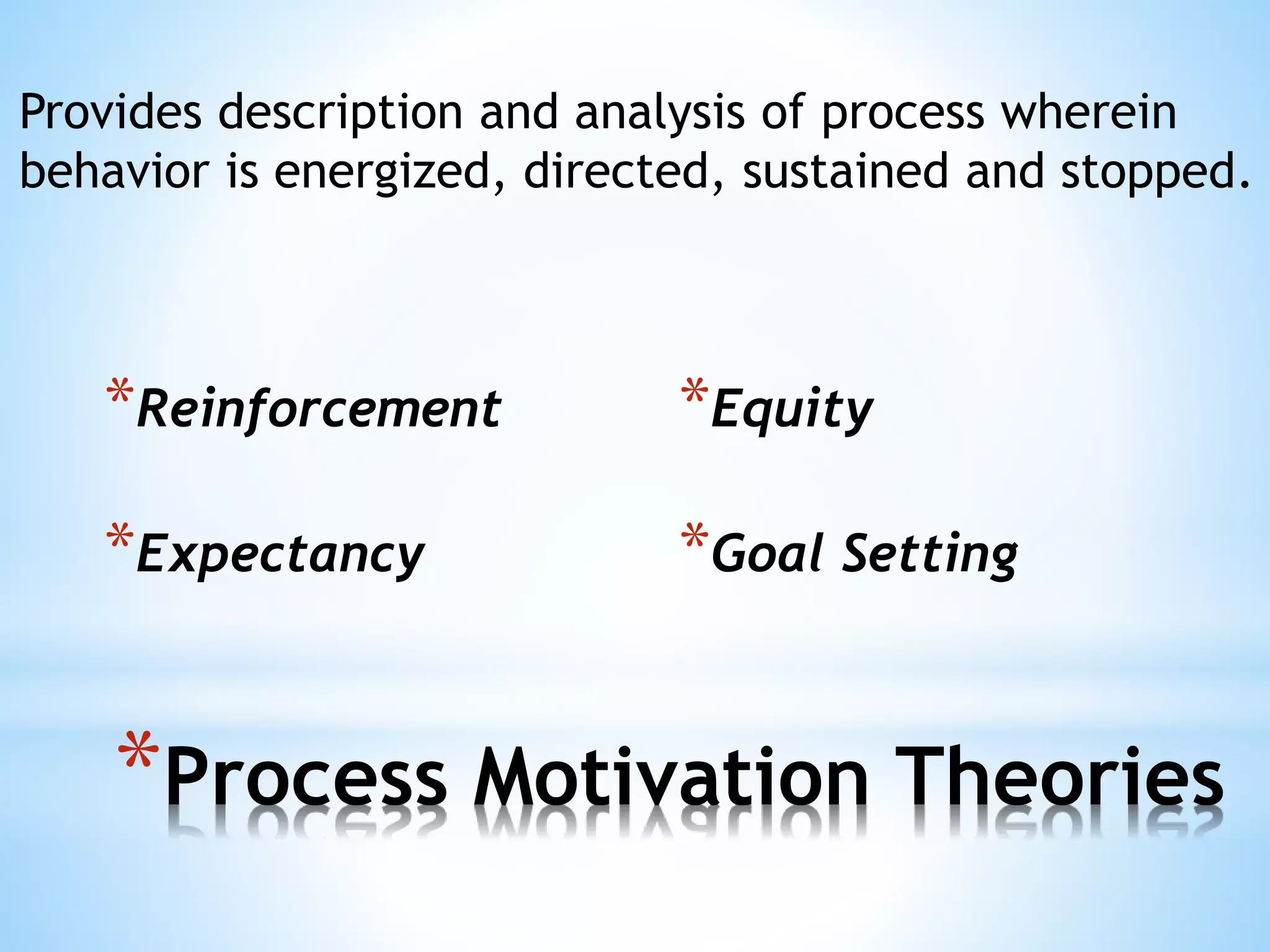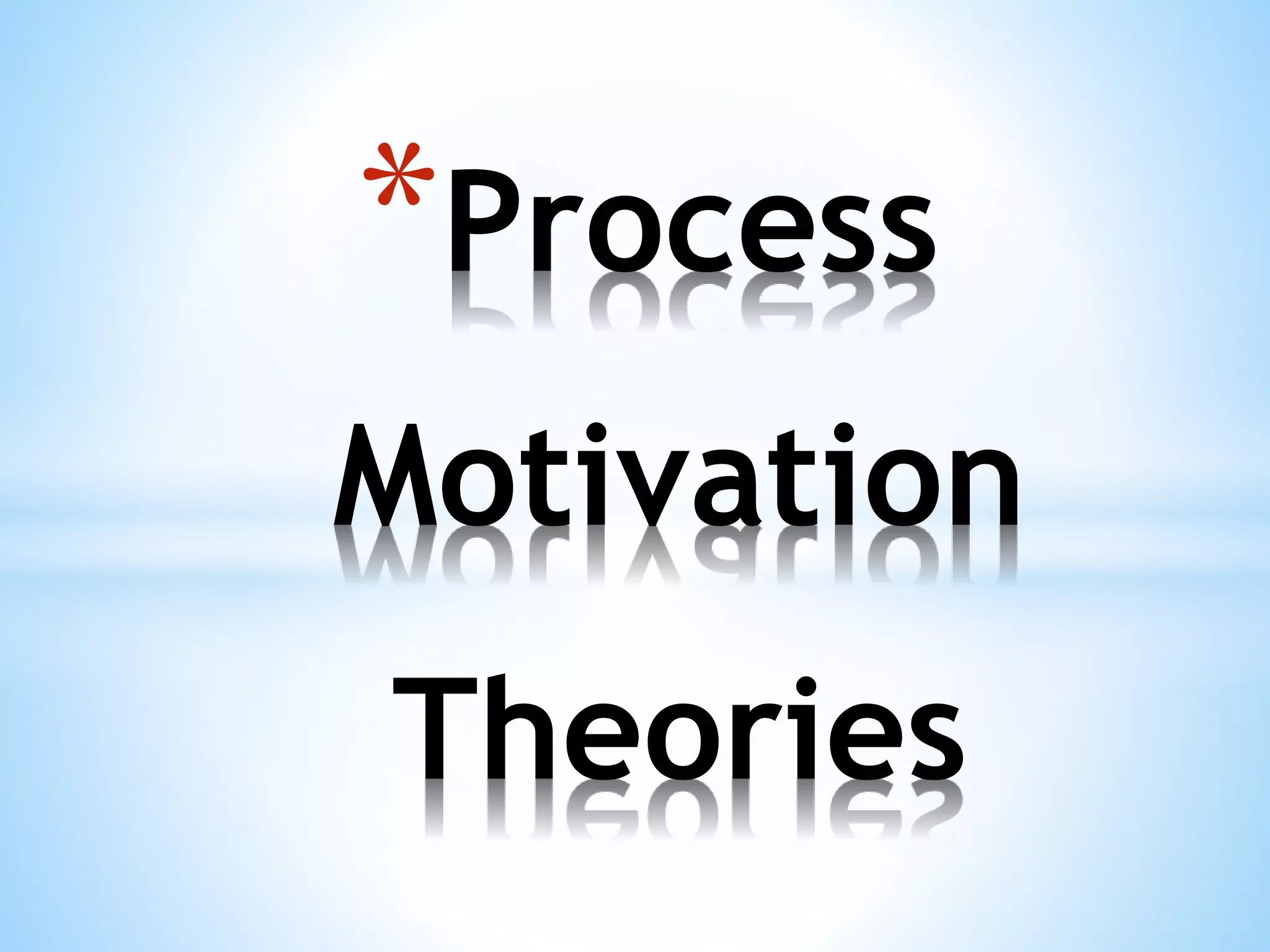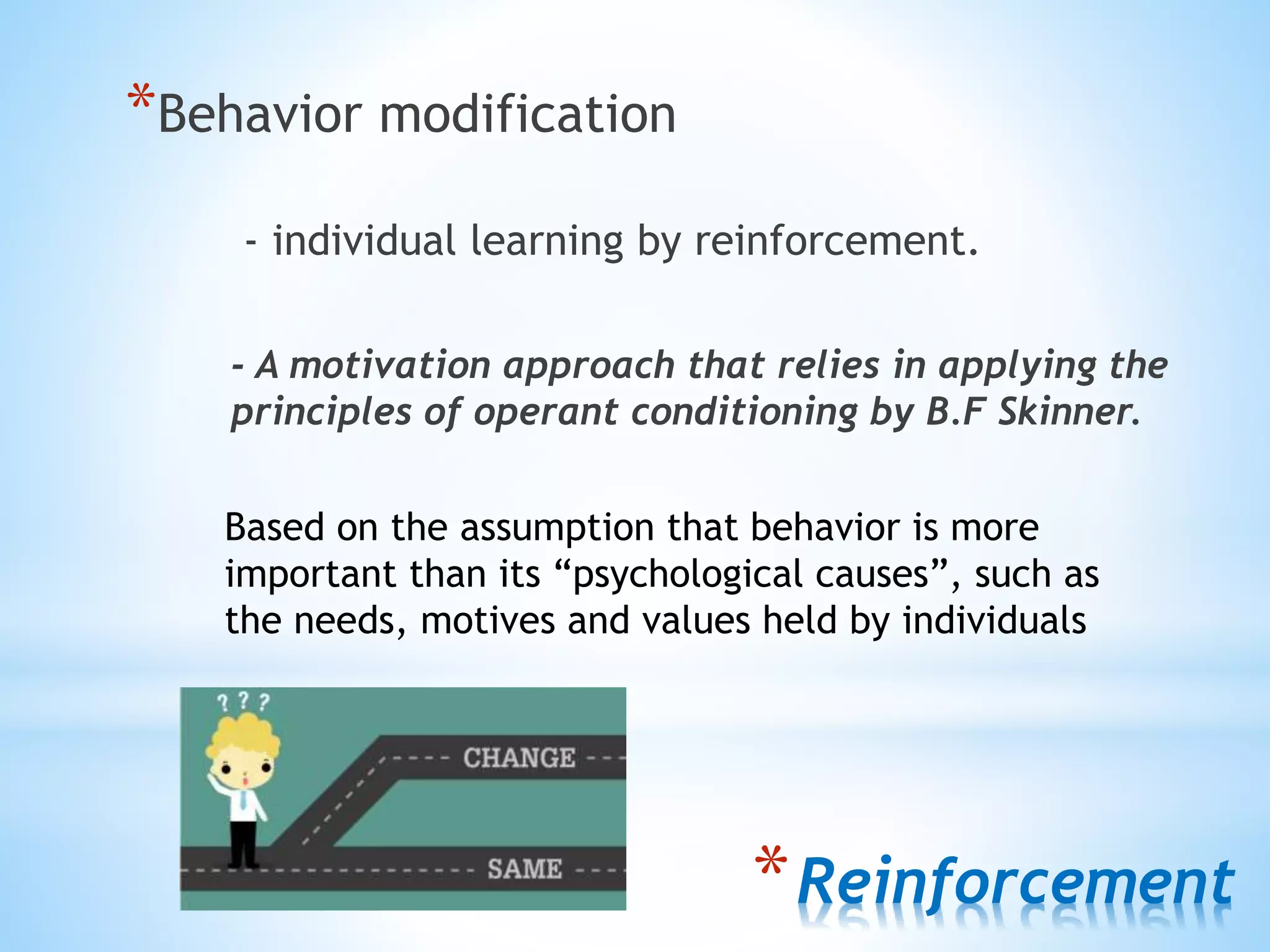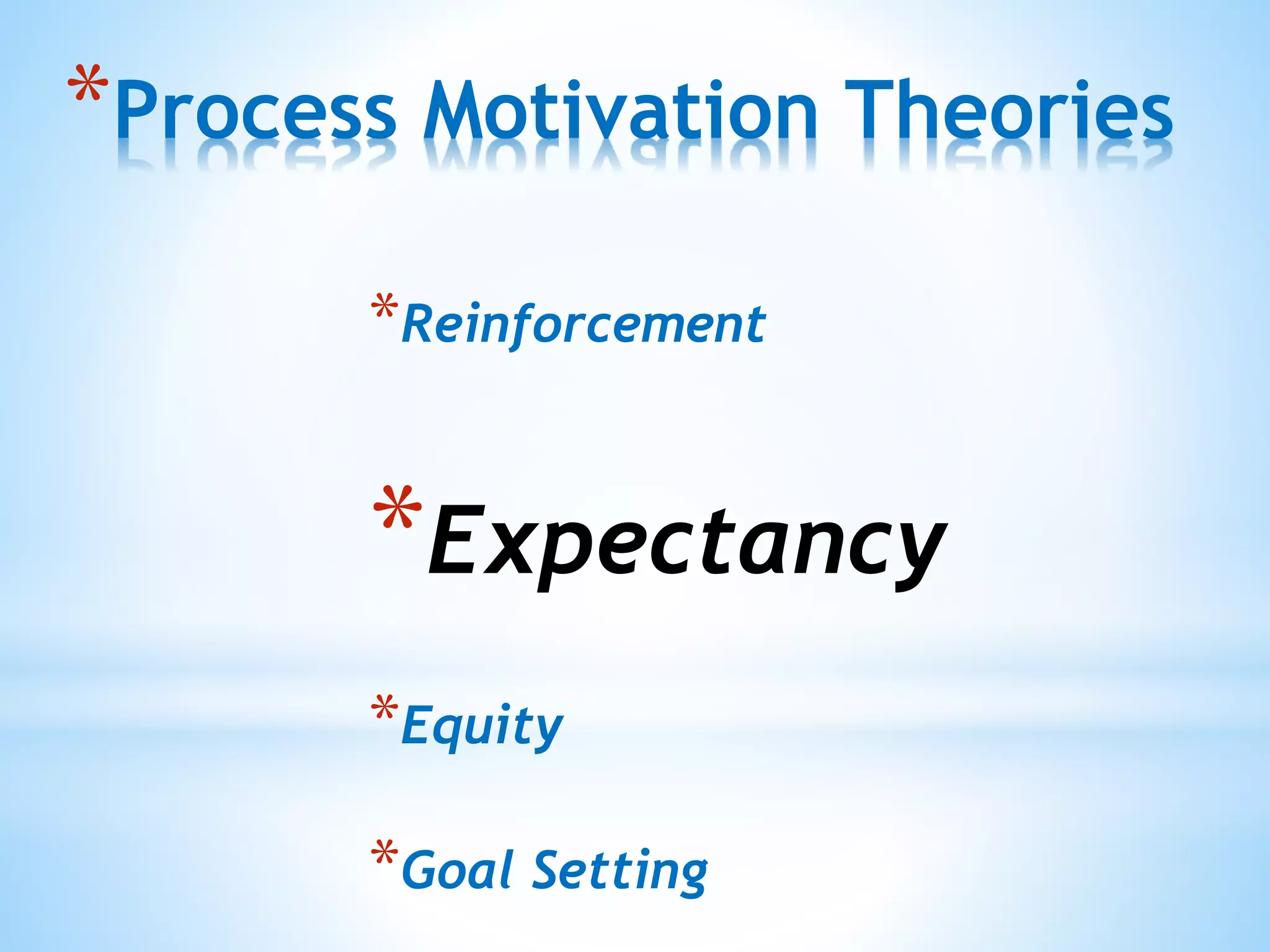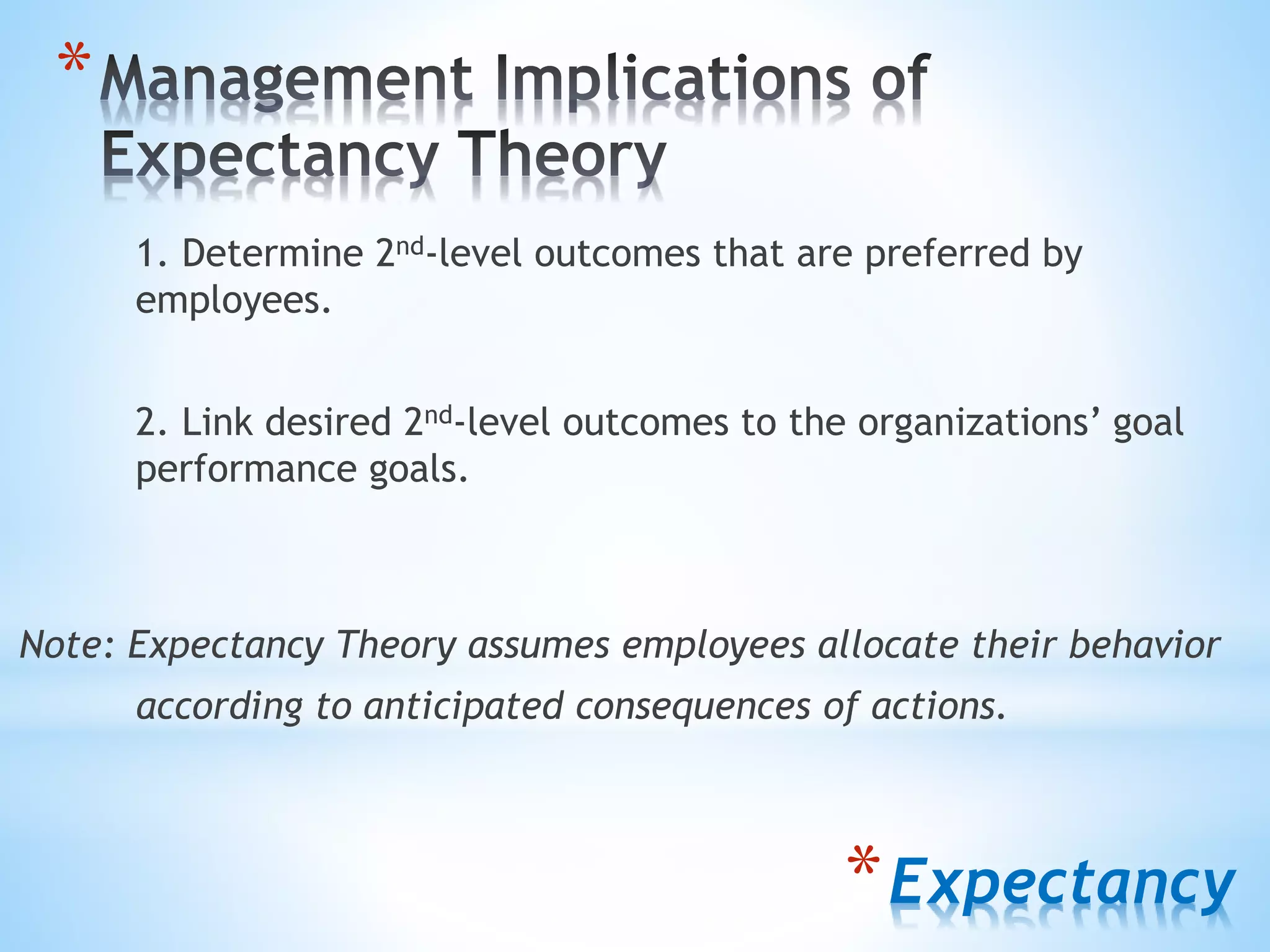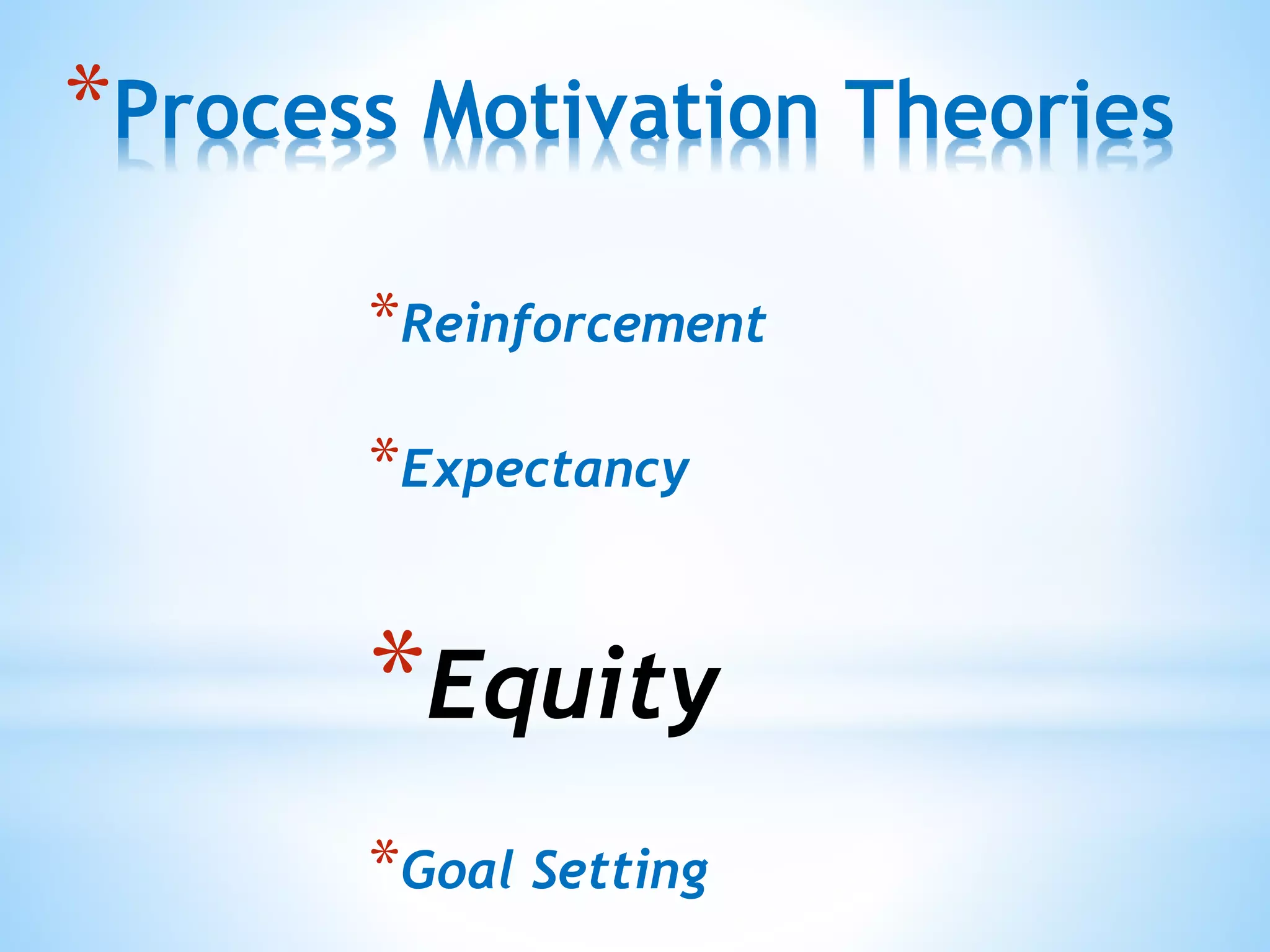Process motivation theories provide frameworks to understand how behavior is energized, directed, sustained, and stopped. The key theories discussed are reinforcement, expectancy, equity, and goal setting. Reinforcement theory examines how behaviors are strengthened or weakened through consequences. Expectancy theory focuses on how individuals are motivated when they believe effort will lead to good performance and performance will lead to outcomes. Equity theory analyzes how individuals are motivated based on fair comparisons to others. Goal setting theory proposes that specific, challenging goals improve performance and motivation.

